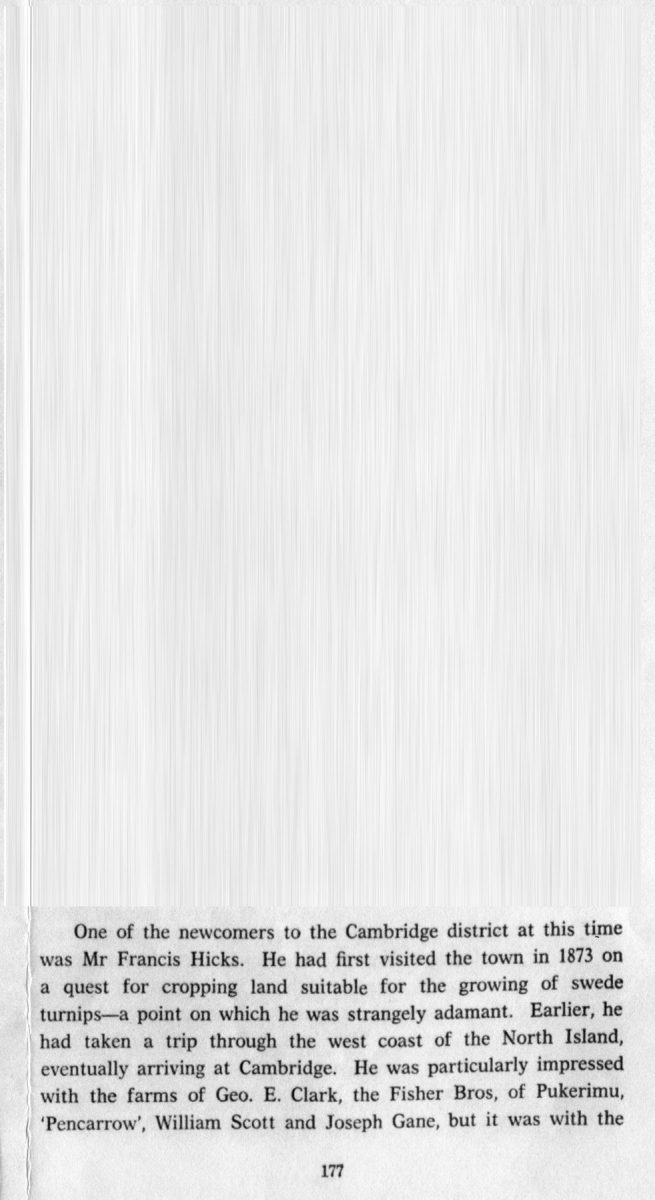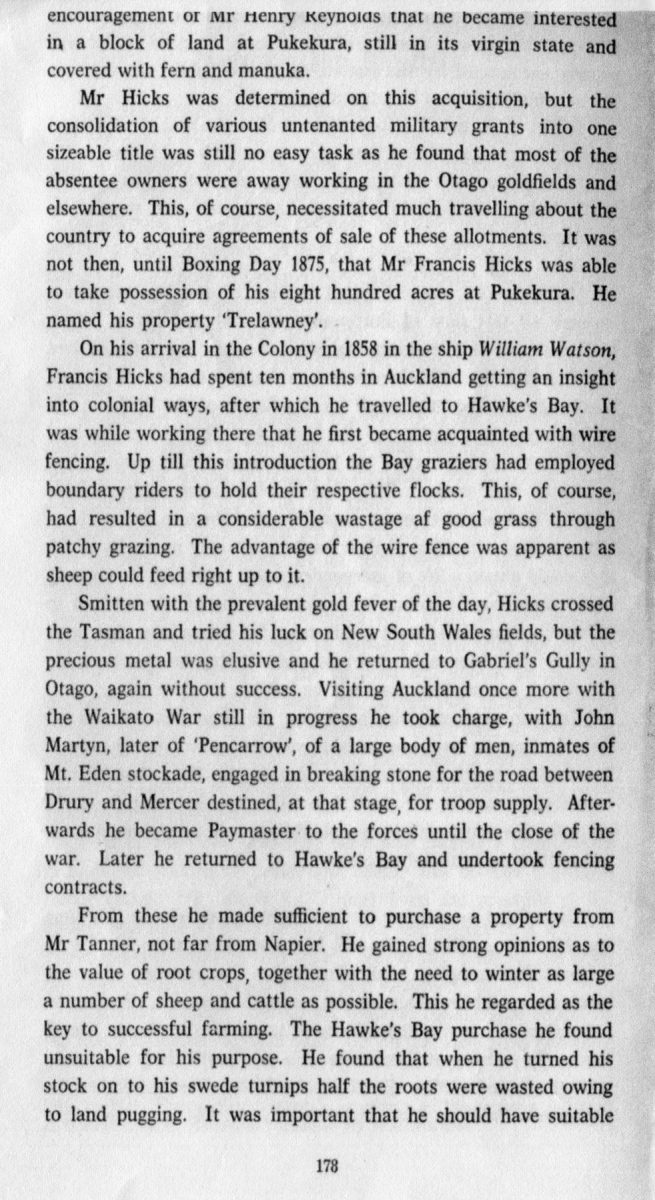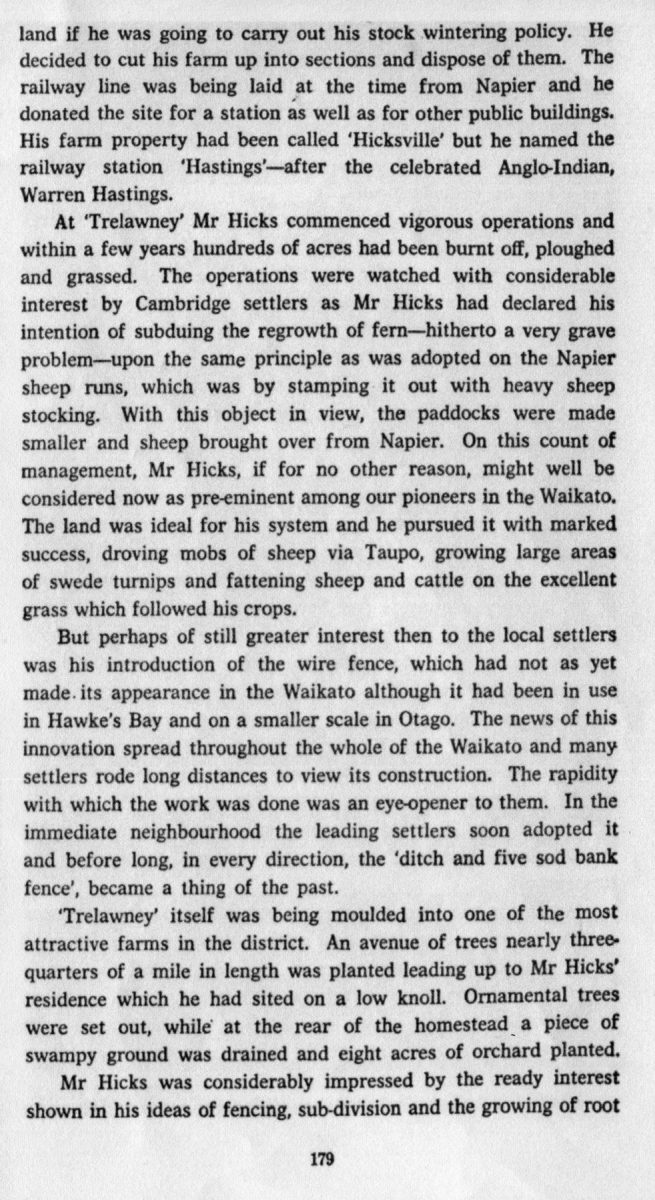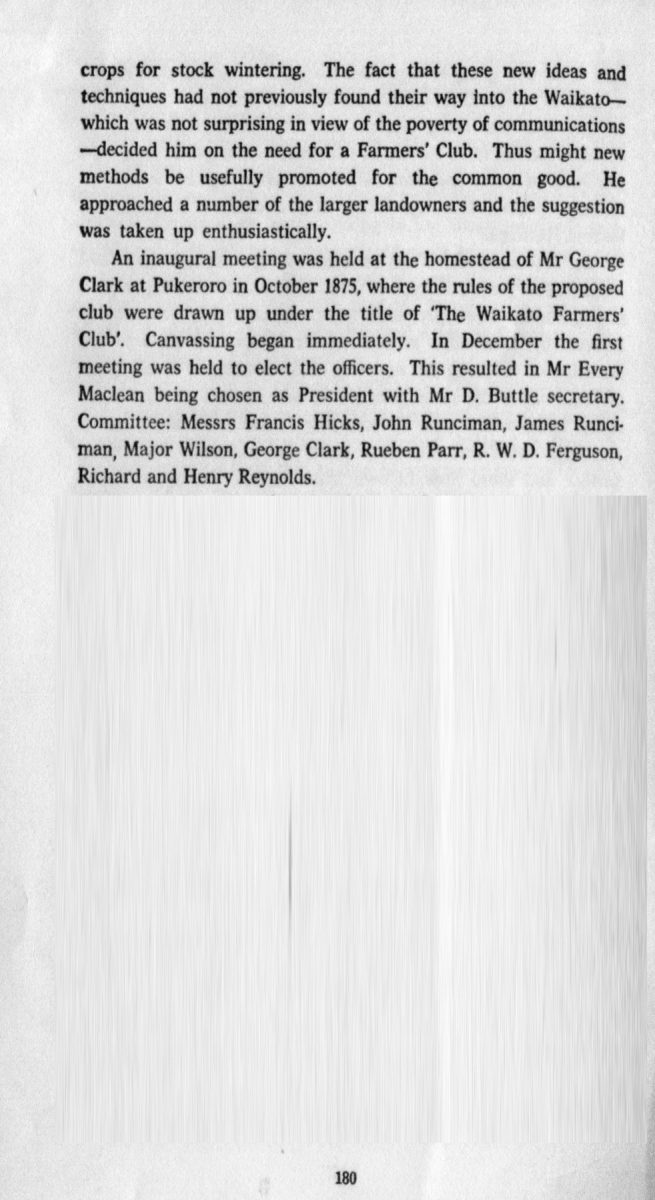Page 178
encouragement of Mr Henry Reynolds that he became interested in a block of land at Pukekura, still in its virgin state and covered with fern and manuka.
Mr Hicks was determined on this acquisition, but the consolidation of various untenanted military grants into one sizeable title was still no easy task as he found that most of the absentee owners were away working in the Otago goldfields and elsewhere. This, of course, necessitated much travelling about the country to acquire agreements of sale of these allotments. It was not then, until Boxing Day 1875, that Mr Francis Hicks was able to take possession of his eight hundred acres at Pukekura. He named his property ‘Trelawney’.
On his arrival in the Colony in 1858 in the ship William Watson, Francis Hicks had spent ten months in Auckland getting an insight into colonial ways, after which he travelled to Hawke’s Bay. It was while working there that he first became acquainted with wire fencing. Up till this introduction the Bay graziers had employed boundary riders to hold their respective flocks. This, of course, had resulted in a considerable wastage of good grass through patchy grazing. The advantage of the wire fence was apparent as sheep could feed right up to it.
Smitten with the prevalent gold fever of the day, Hicks crossed the Tasman and tried his luck on New South Wales fields, but the precious metal was elusive and he returned to Gabriel’s Gully in Otago, again without success. Visiting Auckland once more with the Waikato War still in progress he took charge, with John Martyn, later of ‘Pencarrow’, of a large body of men, inmates of Mt. Eden stockade, engaged in breaking stone for the road between Drury and Mercer destined, at that stage, for troop supply. Afterwards he became Paymaster to the forces until the close of the war. Later he returned to Hawke’s Bay and undertook fencing contracts.
From these he made sufficient to purchase a property from Mr Tanner, not far from Napier. He gained strong opinions as to the value of root crops, together with the need to winter as large a number of sheep and cattle as possible. This he regarded as the key to successful farming. The Hawke’s Bay purchase he found unsuitable for his purpose. He found that when he turned his stock on to his swede turnips half the roots were wasted owing to land pugging. It was important that he should have suitable















Do you know something about this record?
Please note we cannot verify the accuracy of any information posted by the community.